50
The star ingredient in this traditional Korean stew is fermented soybean paste (doenjang). Although there are many variations, this hearty dish typically consists of a flavorful broth that is enriched with rice water, anchovies, kelp, and a generous amount of soybean paste.
The usual additions include different vegetables such as zucchini, onions, scallions, and radishes, as well as tofu, meat, or seafood. Doenjang jjigae is one of the most common stews in Korean cuisine, and it is usually served with rice on the side.
Gamjatang is a flavorful Korean stew made with pork spine and potatoes as the key ingredients, along with bean paste, chili powder, and garlic which are also simmered in the pot. The dish is usually topped with sesame leaves and served with a bowl of rice on the side.
Gamjatang has origins in the Incheon area, famously full of construction workers who used to cook it throughout the day so it could be consumed when they would finish working. The stew would often be paired with a few shots of cold soju. Today, gamjatang is a popular hangover cure in Korea, and it has spread to other territories such as Europe, USA, and Southeast Asia.
MAIN INGREDIENTS
SIMILAR DISHES
WHERE TO EAT THE BEST GAMJATANG IN SOUTH KOREA
VIEW MOREBindaetteok is a savory mung bean pancake which first appeared in a cookbook in the 1670s under the name binjatteok. Originally, it was topped with savory chunks of pork and was mainly enjoyed by the rich, while the plain varieties were reserved for the lower social classes.
Next to ground mung beans, modern-day bindaetteok usually employs a wide variety of other ingredients such as cabbage kimchi, sprouts, onions, glutinous rice, or ground pork. Fried in shallow oil, bindaetteok is best eaten fresh when it is still crispy on the exterior.
MAIN INGREDIENTS
SIMILAR DISHES
WHERE TO EAT THE BEST BINDAETTEOK IN SOUTH KOREA
Songpyeon are steamed South Korean rice cakes consisting of a rice flour shell which is tinted and wrapped around various fillings such as mung bean or sesame powder as well as creamy red bean or chestnut paste. The cakes are formed into half-moon shapes and are usually steamed on a bed of pine needles, which impart flavor and keep the cakes separated.
Songpyeon are traditionally served during Chuseok festival, the annual celebration of a good harvest season.
SIMILAR DISHES
Yakgwa is a deep-fried Korean dessert that is prepared with wheat flour and sesame oil. Traditionally shaped into round or floral forms, the cookies are occasionally spiced, and after frying, they are doused in a sweet, honey-infused syrup. The name yakgwa roughly translates as medicinal confectionery, allegedly because honey was once considered a health remedy.
This ancient Korean dessert is believed to have originated during Later Silla era, and it was traditionally served on various festivities and special occasions.
Kalguksu is a favorite summertime dish of many South Koreans, usually served during rainy seasons and on windy summer days. It consists of handmade wheat flour and egg noodles in a broth that is usually made with shellfish, dried anchovies, and kelp.
The noodles are cut with a knife, giving the dish its name, kalguksu, which literally means knife noodles. Although seafood kalguksu is the most popular variety, there are other versions of kalguksu such as spicy (jjanppong kalguksu), chicken (dak kalguksu), and mushroom kalguksu (beodeot kalguksu).
SIMILAR DISHES
WHERE TO EAT THE BEST KALGUKSU IN SOUTH KOREA
Jokbal is a popular South Korean dish consisting of boneless seasoned and steamed pig's legs. The meat is usually seasoned with a combination of soy sauce, ginger, and black taffy, giving the dish a unique flavor. Jokbal is traditionally served with side dishes such as kimchi, buchu, and shredded radish, while the condiment of choice is usually ssamjang, which is a combination of fermented bean paste and pepper.
It is recommended to serve jokbal wrapped in lettuce leaves.
SIMILAR DISHES
WHERE TO EAT THE BEST JOKBAL IN SOUTH KOREA
Gim gui is a simple, yet delicious Korean side dish consisting of crispy and salty roasted seaweed. The dish is a common item in numerous bento boxes due to its great flavor and hefty doses of fiber, vitamins, minerals, and protein. Many people like to consume gim gui with a cold beer on the side because of its overpowering saltiness.
Although gim gui can nowadays be found in most grocery stores, in the past, every Korean cook used to roast his own seaweed. When beer is not available, it is recommended to pair gim gui seaweed with freshly steamed white rice and consume the whole thing as a nutritious snack.
SIMILAR DISHES
Yuja-cha is a Korean citrus infusion that is mostly enjoyed during winter. It is made with yuya—a lemon-like citrus fruit native to China that was brought to South Korea during Tang dynasty. The tea can be prepared by mixing fresh sliced fruit with sugar and then combining it with warm water.
The other way is to make a fruit preserve (yuja-cheong), which usually consists of sliced yuya, honey or sugar, and water. The tea is then prepared by dissolving the preserve in water. This warming tea should be enjoyed warm and is often claimed to be a soothing health remedy.
SIMILAR HERBAL INFUSIONS
Naengguk is a common name for a group of South Korean cold soups that are usually consumed during summer. It is believed that there is no better refreshment than a bowl of cold naengguk on a hot summer day. The soups are typically divided into two main categories: for the first one, cold water is combined with vinegar and ingredients such as cucumbers, spring onions, garlic, wakame, or nori seaweed.
The second category of naengguk is reserved for soups that benefit health, such as the ones made with sesame, soybeans, or chicken. Naengguk first appeared in the 12th century in a poem written by Yi Gyu-bo, where it was referred to as soup with sunchae and was praised for its refreshing, clear flavor.
SIMILAR DISHES
Kimchi bokkeumbap is a simple and flavorful South Korean dish made with a combination of fried rice and kimchi. It is considered to be a great way to use leftover kimchi. The dish can also be enriched with additional ingredients such as meat, vegetables, and soy sauce.
In most cases, kimchi bokkeumbap is topped with a fried egg before serving, although it can also be garnished with sesame seeds, finely chopped green onions, or gim. Because it is very easy to prepare, inexpensive, and comforting, the dish is a favorite amongst South Korean students.
Hotteok is a popular Korean pancake that is usually filled with cinnamon, brown sugar, and nuts such as peanuts and walnuts. It is commonly sold as street food at numerous Korean street stands, especially when the weather is cold. The pancakes can be either thick or thin, and are characterized by their crispy exterior and tender, chewy interior.
It is believed that hotteok was invented in the late 19th century when Chinese merchants followed their country's soldiers to Korea. Many of them decided to stay in Korea, making Chinese versions of pancakes with savory fillings. However, the Koreans preferred the sweet fillings over the savory ones, and the Chinese then adapted the pancakes according to the Koreans' wishes, thus inventing hotteok.
SIMILAR DISHES
WHERE TO EAT THE BEST HOTTEOK IN SOUTH KOREA
Pajeon is a variety of jeon (Korean pancakes), made with a batter of rice flour, eggs, and green onions (pa), the key ingredient in this dish, hence the name. It is a popular snack or an appetizer that is usually served with rice and a combination of soy sauce and vinegar, used as a dipping sauce.
There are endless variations of the dish prepared by adding other ingredients to it, such as vegetables, kimchi, or seafood. The pancakes, which are easily recognizable by the green onions sticking out from all sides, can either be cooked as small discs or one large pancake that is then cut into individual portions.
MAIN INGREDIENTS
SIMILAR DISHES
WHERE TO EAT THE BEST PAJEON IN SOUTH KOREA
VIEW MOREPatbingsu is a popular South Korean dessert, its name meaning red bean ice flakes. It consists of shaved ice, condensed milk, and sweet azuki bean paste. It is often topped with pieces of Korean rice cakes known as tteok, fresh fruit, or cereals, although there are numerous variations with different toppings that are added according to personal preference.
Patbingsu is at the peak of its popularity during summer, although it is typically available from May to October. The treat is praised for its combination of flavors and textures - crunchy, creamy, and chewy. Although the dish is composed of a number of distinct layers, all ingredients are customarily stirred together before consumption until the shaved ice melts, transforming it into a kind of sweet, cold soup.
SIMILAR DISHES
WHERE TO EAT THE BEST PATBINGSU IN SOUTH KOREA
VIEW MOREBossam is a South Korean dish consisting of sliced and steamed pork that is wrapped in leaves of vegetables such as chard, beetroot, lettuce, or Chinese cabbage. When properly prepared, the meat should have a delicately smooth, creamy taste. It is often accompanied by rice, sweet kimchi, and shrimp sauce.
The dish is traditionally served as anju, denoting dishes that go well with alcoholic beverages. Bossam is a classic example of a simple dish that really comes together with the addition of numerous condiments and toppings, so many restaurants like to serve it with side dishes such as kimchi stew, dwenjang jjigae, or seafood pancakes.
WHERE TO EAT THE BEST BOSSAM IN SOUTH KOREA
VIEW MORESamgyetang is a flavorful soup from South Korea, consisting of a whole young chicken cooked with ginseng, garlic, and rice. In Korea, ginseng is revered for its medicinal properties, as it lowers blood sugar and boosts the body's immune system and stamina, making samgyetang an ideal soup for hot summer days, when people fall into nutrition deficiency due to excessive sweating and loss of appetite.
The flavors of the soup are somewhat milder than other Korean and Chinese herbal medicinal soups, and the key to its popularity during the summer may also be in its price, as it is generally pretty inexpensive. If consumed in a restaurant, there will often be a small bottle of insangju ginseng alcohol served on the side, believed to boost physical and sexual stamina.
WHERE TO EAT THE BEST SAMGYETANG IN SOUTH KOREA
Samgak is a triangle-shaped variety of gimbap—South Korean rice roll. It consists of various fillings that are neatly placed inside a piece of triangle-shaped rice. The pouches are then wrapped in seaweed (gim) and are typically additionally covered with a thin plastic wrapper, which allows the gimbap to stay fresh for an extended period.
This gimbap was inspired by the Japanese onigiri, a similar triangle-shaped sushi variety, but the fillings were adapted to Korean taste, and traditionally include various combinations of kimchi, tuna, bulgogi, or gochujang paste.
Geotjeori is a fresh variety of kimchi. Just like classic kimchi, it is usually prepared with napa cabbage (baechu), but unlike the more popular version, geotjeori is not fermented. It is typically made with tender and salted cabbage leaves or other vegetables, which are coated in an aromatic paste usually consisting of chili flakes, soy sauce, garlic, ginger, fish sauce, or (occasionally) anchovy sauce.
The crispy texture and refreshing flavor of geotjeori perfectly complement hearty soups and stews, but it can also be served with various other dishes. Geotjeori is best enjoyed freshly made and sprinkled with sesame seeds.
Kimchi jjigae is a flavorful Korean stew that employs kimchi as its base ingredient. Other elements usually include diced tofu, pork, or seafood, along with scallions and other vegetables such as potatoes or zucchinis. Kimchi stew is one of the most common dishes enjoyed in South Korea, and it is traditionally served as a communal meal, and should always be piping hot.
The dish is best prepared with older kimchi since it tends to impart more flavor to the stew. Kimchi jjigae is usually served with rice on the side, as well as other traditional Koran sides (banchan).
SIMILAR DISHES
WHERE TO EAT THE BEST KIMCHI JJIGAE IN SOUTH KOREA
VIEW MORESsam is a South Korean technique that encompasses various dishes that are made by wrapping different ingredients in raw or blanched lettuce, other green leafy vegetables, as well as seaweed or other wrappers. The dishes are classified depending on the filling or the variety of a wrapper.
The most popular ssam is sangchu which consists of a lettuce wrapper and various ingredients such as rice, pork, or kimchi. Other popular options include bossam, made with sliced and steamed pork and vegetable wraps, while the most basic variety is ssambap—which consist of rice wrapped in lettuce or other leaves.
SIMILAR DISHES
SSAM VARIETIES
WHERE TO EAT THE BEST SSAM IN SOUTH KOREA
VIEW MOREThis thick and spicy paste is one of the most common dipping sauces in South Korean cuisine. It is traditionally prepared with a combination of fiery gochujang (red pepper paste) and the pungent doenjang (fermented soybean paste).
Although the combination is easily adapted to personal preference, the usual additions include sesame oil, scallions, sesame, garlic, and some sweet element such as brown sugar or honey. Ssamjang is roughly translated as a sauce for wraps, and it is usually enjoyed as a dipping sauce served with various Korean barbecue dishes such as bulgogi or galbi.
Mandu are Korean dumplings that are typically filled with various combinations of meat and vegetables. The varieties may include tofu or shrimps, as well as meat-free versions. The most common choices are pork, beef, cabbage, kimchi, bean sprouts, onions, scallions, and mushrooms, but the ingredients can vary depending on the season.
Although there are many theories of their origin, it is not precisely known when mandu dumplings first appeared in South Korea, but they are associated with other types of stuffed dumplings found in Turkey, Central Asia, China, and Japan. Nowadays, these traditional dumplings are an everyday dish, but in the past, they were only served at the royal court or on special occasions.
SIMILAR DISHES
Baechu (Napa cabbage) is one of the essential kimchi varieties in South Korea, and it is often almost synonymous with the word kimchi. Although the dish can significantly vary, most variations are made with whole Napa cabbages that are generously coated with a mixture of glutinous rice paste, gochugaru chili pepper flakes, garlic, onions, jeotgal (fermented seafood), fish sauce, and ginger, while the common additions also include sliced radishes, carrots, or green onions, as well as other types of seasonings and condiments.
Like most kimchi versions, baechu is also traditionally made in onggi—an ancient Korean earthenware that is suitable for fermentation. When prepared, kimchi should be left for at least a couple of days, preferably longer, allowing it to ferment and achieve its typical spicy-sour flavor.
Dakbokkeumtang is a South Korean dish consisting of chicken pieces, potatoes, onions, and carrots that are stir-fried in a mixture of soy sauce, gochujang (fermented sauce), and garlic. The dish originated in the 20th century, with the introduction of mass poultry farming in Korea, and it soon became one of the favorite poultry dishes in the country.
It is sometimes called dakdoritang, derived from the word dak (chicken in Korean), and the word dori (bird in Japanese). The dish is often praised for its combination of flavors, the heat from ground red peppers, and the tenderness of the meat.
This fermented kimchi variety is made with green onions (scallions) as the main ingredient. The onions are cleaned and then coated in a spicy mixture of chili flakes, fish sauce, ginger, garlic, and anchovy sauce. Optionally, the paste may be made with a rice flour base, while sesame seeds are typically sprinkled as a garnish.
Pa kimchi is best when prepared in spring, when green onions are in season. It is usually enjoyed as banchan - a traditional Korean side dish.
MAIN INGREDIENTS
SIMILAR DISHES
Jjapaguri is a Korean dish that consists of two types of instant noodles. It's also known as ram-den, a made-up word popularized in Boong Joon-Ho's movie Parasite, denoting a combination of ramen and udon. Jjapaguri combines Korean instant noodles such as Chapagetti (jajang ramen noodles) and Neoguri (udon noodles in a spicy seafood broth) for a budget comfort food item, while in the movie Parasite, the dish looks a bit fancier because it's topped with premium beef (hanu), showing how affluent the upper-class family really is.
In order to prepare ram-don at home, just combine Chapagetti and Neoguri, then top it with a well-marbled sirloin steak and garnish it with chopped green onions, if desired.
SIMILAR DISHES
Doenjang soybean paste is one of the essential elements in South Korean cuisine. Traditionally, it is made with fermented meju (large blocks of boiled soybeans) that are covered in brine and are then soaked in traditional onggi vessels.
The process results in the production of a coarse soybean paste, while the brine is further aged to become Korean-style soy sauce (ganjang). Doenjang is used to provide depth and a more complex flavor profile in many Korean soups and stews, as well as in marinades and the popular ssamjang sauce.
SIMILAR CONDIMENTS
Gyeran mari is a type of South Korean rolled omelet that usually incorporates various additional ingredients. The dish is made with lightly beaten eggs, while the fillings typically include finely sliced or diced scallions, carrots, peppers, mushrooms, zucchini, cheese, ham, bacon, or nori seaweed.
After the omelet has been rolled, it is typically served sliced. Gyeran mari is a popular breakfast dish, but it's also a common lunch box item, as well as a side dish (banchan) or anju—a small dish that's typically consumed with alcoholic beverages.
Injeolmi are traditional South Korean steamed rice cakes. They are prepared by steaming and pounding rice into a pliable dough which is then rolled and generously dusted with roasted soybean powder. The varieties include ssuk injeolmi, which incorporates mugwort powder, or kkaeinjeolmi, which is dusted with black sesame.
According to a legend, these cakes were invented by a commoner Yim who offered them to the king Injo after he fled Seoul due to a rebellion. To show his appreciation, the king named the dish after its inventor. Nowadays, injeolmi is mainly enjoyed on special occasions, and it is usually served sliced into bite-sized rectangular pieces.
SIMILAR DISHES
WHERE TO EAT THE BEST INJEOLMI IN SOUTH KOREA
Namul is a widely accepted term used to refer to Korean vegetable side dishes, which can include green leafy vegetables, starchy root varieties, sprouts, green beans, and occasionally even fruit. The ingredients are used in raw, pickled, fried, sautéed, blanched, or dry form.
They are usually seasoned with soy sauce, sesame oil, sesame seeds, vinegar, garlic, and occasionally the spicy red chili paste known as gochujang. The seasoning in all namul types is not overpowering, and the main characteristic is the fresh taste of the vegetables.
Dak galbi is the South Korean variety of stir-fried chicken. It is a communal dish that's cooked tableside, on large cast iron skillets. Typical elements in dak galbi include various chicken cuts, cabbage, tteok rice cakes, carrots, chili peppers, and sweet potatoes.
When served in restaurants, the server will bring all the ingredients and cook the dish for the guests. Occasionally, perilla leaves are incorporated into dak galbi, but the final addition is always a generous amount of spicy sauce made with spicy chili paste, chili flakes, soy sauce, garlic, ginger, and onions.
WHERE TO EAT THE BEST DAK GALBI IN SOUTH KOREA
Makgeolli is the oldest Korean liquor that dates back to the 10th century. It is usually made from rice which is fermented with nuruk—traditional Korean starter. The fermentation process produces a lightly fizzy drink with a typical milky appearance and a slightly sweet flavor.
Makgeolli was the most popular Korean drink until the 1980s when it was largely overshadowed by imports, and it gained the status of a farmer’s drink (nongju). However, in the last decade, the drink has seen an increase in popularity, and it can be found in many South Korean bars.
SIMILAR ALCOHOLIC BEVERAGES
MAKGEOLLI VARIETIES
One of the essential ingredients in South Korean cuisine is a spicy, thick, and concentrated gochujang paste. In its basic form, it is made with a combination of gochugaru (fine chili powder made from a specific type of gochu chili pepper), meju (fermented soybean powder), salt, and glutinous rice.
The combination of these fine powders is then left to ferment for several months, or even longer. Because of its popularity, many regional varieties appear throughout the country. Gochujang was first mentioned in writing in 1614, but it is believed that it existed prior to that.
SIMILAR CONDIMENTS
Sundubu jjigae is a variety of traditional Korean stews. Besides numerous other ingredients, the foundation of sundubu is uncurdled tofu. Since the tofu is not strained, its consistency is not firm, but rather soft and silky. It can vary in texture from incredibly soft to more solid types, but it never reaches the consistency of completely strained tofu.
The choice of additional ingredients is extensive and primarily depends on personal preferences. It can be based on meat (usually beef) or a variety of seafood. Occasionally, both meat and seafood can be used in the dish at the same time. Onions, zucchini, scallions, mushrooms, and garlic are the most common vegetables found in sundubu.
WHERE TO EAT THE BEST SUNDUBU JJIGAE IN SOUTH KOREA
VIEW MOREYakiniku is a term denoting a Japanese technique (with Korean origins) of cooking bite-sized pieces of meat and vegetables on a table grill. It can also refer to a number of dishes cooked using the same technique. Yakiniku has Korean origins and was inspired by the famous Korean dishes galbi and bulgogi, although the meat in yakiniku is usually not marinated before grilling.
Traditionally, raw, thinly sliced meat and vegetables are brought to the table and grilled by the consumers. The most popular meat for yakiniku includes beef, pork, chicken, and a variety of shellfish. Numerous sauces and dips are usually served on the side - from soy sauce and miso sauce to garlic oil sauce.
SERVE WITH
SIMILAR DISHES
Ansim is the South Korean name for beef tenderloin, the most prestigious cut of meat. Believed to be the most tender cut of the animal, tenderloin is usually very low in fat, yet it remains soft and velvety. It is dark red in color, and the best cuts are usually marbled with thin stripes of fat.
Since beef tenderloin is quite long, it is usually sliced into smaller pieces. In South Korea, ansim is typically roasted on a grill. Gogigui is the name of a traditional South Korean barbecue on which the meat is often grilled in front of the customers in a restaurant.
Korean soju is distilled from fermented rice, or optionally wheat, barley, sweet potatoes, or tapioca. It is believed that it initially appeared when Mongols introduced the distilling technique to the Koreans, sometime in the 13th century.
The first varieties were made with rice, but in 1965 Korean government introduced a ban on using rice, and many producers looked for alternative sources. Soju is a clear spirit that is usually low in alcohol and has a mild, neutral flavor, which makes it work well with a wide array of dishes.
SIMILAR SPIRITS
Gui is a name which refers to all grilled dishes found in Korean cuisine. Grilling is one of the key components and cooking methods in Korea, and unlike traditional western styles, it employs a set of rules and customs which should be followed.
Traditionally, every table in an authentic Korean restaurant has a hole in the middle of the table where a grill is placed over charcoal or gas. Initially, all the ingredients come to the tables raw, but sliced and prepared. The customers then assemble and cook the dish according to personal preferences.
Beef, chicken, and pork are three of the most famous meat varieties used for grilling. The meat can already be marinated, like the famous bulgogi and galbi beef, or plain and unseasoned like sliced pork belly, popularly known as samgyeopsal.
SERVE WITH
PAIR WITH
SIMILAR DISHES
WHERE TO EAT THE BEST GUI IN SOUTH KOREA
VIEW MOREAnsim is the South Korean name for beef tenderloin, the most prestigious cut of meat. Believed to be the most tender cut of the animal, tenderloin is usually very low in fat, yet it remains soft and velvety. It is dark red in color, and the best cuts are usually marbled with thin stripes of fat.
Since beef tenderloin is quite long, it is usually sliced into smaller pieces. In South Korea, ansim is typically roasted on a grill. Gogigui is the name of a traditional South Korean barbecue on which the meat is often grilled in front of the customers in a restaurant.
Japchae is a South Korean dish made by stir-frying glass noodles and vegetables. The dish is often served with beef and additionally flavored with sugar and soy sauce. The name of the dish is translated to a mixture of vegetables. The original japchae did not contain meat nor noodles, and it was invented by King Gwangaegun's servant, who prepared the meal for a royal celebration.
The king loved the dish so much that the servant got promoted to an upper rank. Since many Korean foods feature five colors, japchae also meets that criterium: green for spinach, red for carrots, black for mushrooms, and yellow and white for a fried egg, typically used as a garnish in japchae.



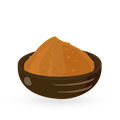



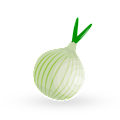





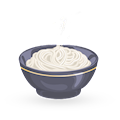

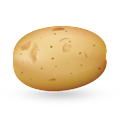


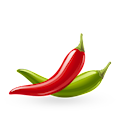









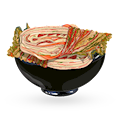





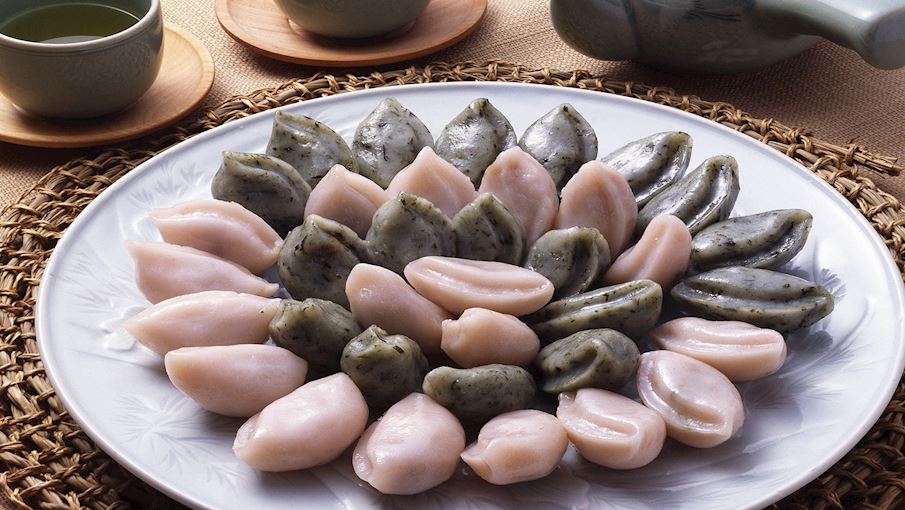

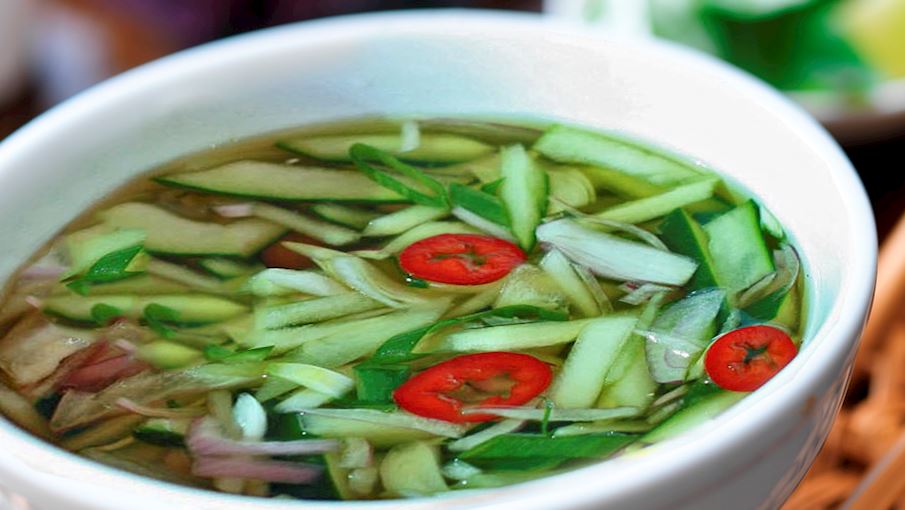





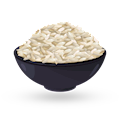





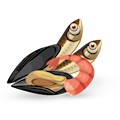







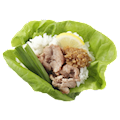










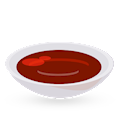





















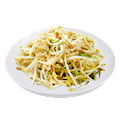
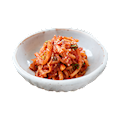

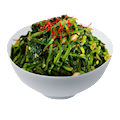

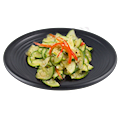











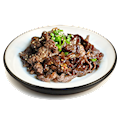


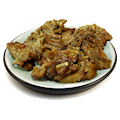

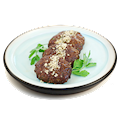

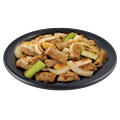











No comments:
Post a Comment